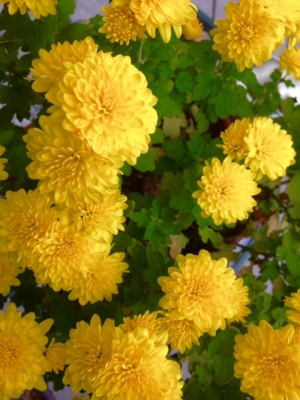My mother asked that no cut flowers
be at her wake, so her favorite,
yellow chrysanthemums, in pots, filled the room,
then were put in the September ground.
Eleven years. One remains. Elysium’s November gold.

While writing this poem, I reread Thomas Hardy”s “The Last Chrysanthemum” which contains this stanza:
Why should this flower delay so long
To show its tremulous plumes?
Now is the time of plaintive robin-song,
When flowers are in their tombs.
I thought about using the word “wake” and wondered about the origin of the usage relating to death and funerals. It is from Old English (wōc) and wacian meaning “remain awake, hold a vigil” and the Dutch waken and German wachen, meaning to watch.
I continue to watch and hold a vigil.



